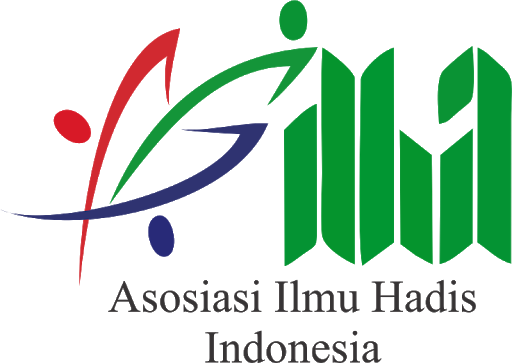The Interdisciplinary Approach and It’s Contribution to the Study of Living Hadith
Pendekatan Interdisipliner dan Kontribusinya dalam Studi Living Hadis
DOI:
https://doi.org/10.14421/livinghadis.2023.4912Keywords:
living hadis, kontribusi, interdisiplinerAbstract
The term "Living Hadith" represents a new variant in Hadith studies. The author will elucidate the interdisciplinary approach that has been employed in Living Hadith studies and its contributions. This research applies literature review methodology. Data is collected from Google Scholar research within the timeframe of 2017-2023. Subsequently, the data is classified and analyzed. This study identifies three interdisciplinary approaches most commonly utilized by Living Hadith researchers: phenomenology, sociology of knowledge, and ethnography. The study also demonstrates the contributions of interdisciplinary approaches in Living Hadith studies, including preventing Living Hadith researchers from falling into subjective judgment and unilateral justifications, as well as avoiding the limitation of Living Hadith studies to the mere description of a tradition subsequently grounded in Hadith. Instead, these approaches make the study more intriguing by drawing diverse conclusions in line with the interdisciplinary approach employed.
 Abstract viewed: 652 times
|
Abstract viewed: 652 times
|
 pdf downloaded = 808 times
pdf downloaded = 808 times
References
Aini, S. Q. (n.d.). TRADISI QUNUT DALAM SHALAT MAGHRIB DI PONDOK PESANTREN WAHID HASYIM YOGYAKARTA.
Al-Anwari, A. U. M., Wicaksono, B., & Saputro, D. W. (2022). STUDY OF LIVING HADITH TOWARDS KUBRO SISWO ARTS AS ISLAMIC SYI’AR. Jurnal Living Hadis, 6(2), 231. https://doi.org/10.14421/livinghadis.2021.3216
Farhan, A. (2017). LIVING AL-QUR’AN SEBAGAI METODE ALTERNATIF DALAM STUDI AL-QUR’AN. 6.
Hasan, D. M., Pd, S., Pd, M., Harahap, D. T. K., Si, M., Hasibuan, S., Rodliyah, I., Si, S., Pd, M., Thalhah, S. Z., Pd, S., Pd, M., Ratnaningsih, P. W., Pd, S., & Hum, M. (n.d.). METODE PENELITIAN KUALITATIF.
Hasan, M. Z. (2020). Tradisi Beraspati Desa Kembang Kerang Daya. Jurnal Living Hadis, 5(1), 41. https://doi.org/10.14421/livinghadis.2020.2177
Hasbillah, A. (2019). Ilmu Living Qur’an-Hadis: Ontologi, Epistemologi, dan Aksiologi. Tangerang: Maktabah Darus-Sunnah.
Khamim, & Hadziq, H. (2020). Living Hadis Penutupan Lapak Jual Beli Ketika Waktu Shalat di Kampung Madinah Desa Temboro Karas Magetan Jawa Timur. Tribakti: Jurnal Pemikiran Keislaman, 31(2), 253–268. https://doi.org/10.33367/tribakti.v31i2.1043
Khosyiah, F. (2018). Living Hadis dalam Kegiatan Peringatan Maulid Nabi di Pesantren Sunan Ampel Jombang. Jurnal Living Hadis, 3(1), 23. https://doi.org/10.14421/livinghadis.2017.1363
Ma’ruf, Moh. A. (2021). TRADISI ZIARAH DALAM PERSPEKTIF HADIS NABI: Holistic al-Hadis, 7(1), 49. https://doi.org/10.32678/holistic.v7i1.5289
Morissan, A. C. W., & Hamid, F. (2010). Teori komunikasi massa. Bogor: Ghalia Indonesia.
Munawar, A. M. (n.d.). ZIKIR FIDA DALAM PANDANGAN MASYARAKAT DESA SUMOROTO KECAMATAN KAUMAN KABUPATEN PONOROGO (KAJIAN LIVING HADIS).
Ni’am, A. (2021). The Tradition of Reading Asma’ul Husna in al-Muhsin Mosque, Krapyak, Yogyakarta. Jurnal Living Hadis, 6(1), 87. https://doi.org/10.14421/livinghadis.2021.2665
Qudsy, S. Z. (2016). LIVING HADIS: GENEALOGI, TEORI, DAN APLIKASI. 1.
Rahman, M. A. (2022). Ngalap Barokah Minuman Bekas Kiai Kajian Living Hadis Teori Sosial Emile Durkheim: Studi Kasus Pondok Pesantren An-Nur Komplek Nurul Huda Bantul Yogyakarta. Musala : Jurnal Pesantren dan Kebudayaan Islam Nusantara, 1(2), 123–141. https://doi.org/10.37252/jpkin.v1i2.172
Siddiq, M., & Salama, H. (2019). Etnografi Sebagai Teori Dan Metode. Kordinat: Jurnal Komunikasi antar Perguruan Tinggi Agama Islam, 18(1), 23–48. https://doi.org/10.15408/kordinat.v18i1.11471
Sofwan, N. (2018). Living hadis: Studi atas fenomena tradisi fidyah salat dan puasa bagi orang meninggal di Indramayu [masterThesis, UIN Syarif Hidayatullah Jakarta: Fakultas Ushuluddin, 2018]. https://repository.uinjkt.ac.id/dspace/handle/123456789/37820
Sulaiman, A. (2016). MEMAHAMI TEORI KONSTRUKSI SOSIAL PETER L. BERGER. Society, 4(1), 15–22. https://doi.org/10.33019/society.v4i1.32
Suryadilaga, M. A. (2009). MODEL-MODEL LIVING HADIS PONDOK PESANTREN KRAPYAK YOGYAKARTA. ALQALAM, 26(3), 367. https://doi.org/10.32678/alqalam.v26i3.1559
Syamsuddin, S. (2007). Metodologi Penelitian Living Qur’an dan Hadis. Yogyakarta: Teras. https://scholar.google.com/scholar?cluster=18374011752762329693&hl=en&oi=scholarr
Tuffour, I. (2017). A Critical Overview of Interpretative Phenomenological Analysis: A Contemporary Qualitative Research Approach. 2(4).
Downloads
Published
Issue
Section
License
Copyright (c) 2024 Viki Junianto, Mo’afi, Amrulloh

This work is licensed under a Creative Commons Attribution-ShareAlike 4.0 International License.
- Authors who publish with this journal agree to the following terms:
- Authors retain copyright and grant the journal right of first publication with the work simultaneously licensed under a Creative Commons Attribution License that allows others to share the work with an acknowledgement of the work's authorship and initial publication in this journal.
- Authors are able to enter into separate, additional contractual arrangements for the non-exclusive distribution of the journal's published version of the work (e.g., post it to an institutional repository or publish it in a book), with an acknowledgement of its initial publication in this journal.
- Authors are permitted and encouraged to post their work online (e.g., in institutional repositories or on their website) prior to and during the submission process, as it can lead to productive exchanges, as well as earlier and greater citation of published work.
















